The need to mount components onto a printed circuit board (PCB) to turn them into a module and even a finished product gave rise to SMT manufacturing.

This blog presents the complete SMT manufacturing process.
But wait ... You may need to learn some critical terms related to SMT manufacturing before viewing the SMT process.
Terms Related to SMT
SMT: Surface mount technology. It places and solders components on the PCB pads that are on the surface of the circuit board. The PCB assembly process using SMT technology is called SMT assembly or SMT PCBA manufacturing.
PTH: Through-hole, is the other PCB assembly technology compared with SMT. The components with longer leads insert the PCB through holes and are soldered with the copper hole walls.
PCB: A printed circuit board is made of laminating and drilling multiple layers of fiberglass epoxy, prepreg, and copper layers that are etched to be the circuit graphics and plating copper in the hole walls. After PCB fabrication, it is a bare circuit board without components.
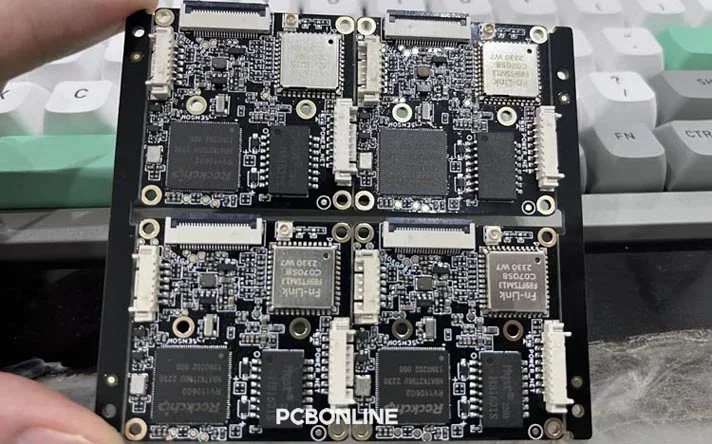
PCBA: When a PCB is surface-mounted or through-hole-mounted with components, we call this semi-finished product a PCBA. It can further assemble with other PCBAs and an enclosure to become a complete product or box-build we call it.
SMD: Surface mount device, is is an electronic component for SMT manufacturing. Compared with PTH components for PTH assembly, SMDs have a much smaller weight and size about 1/10 of a PTH component of the same function. This makes SMT manufacturing popular because of the much smaller size and finer circuits of the electronic product.
Understanding the terms, now walk through the SMT manufacturing process!
SMT Manufacturing Process
Want plain text to explain the SMT manufacturing process? No worries, below is the step-by-step process.
1. Transfer PCB into solder paste printing machine
So you are standing beside the start of an SMT assembly line. The first machine is a loader that holds all the PCBs in line for SMT manufacturing. The loader automatically sends the bare PCB one by one through a transmission rod into a solder paste printing machine. When a PCB finishes, the next PCB is in turn.
2. Solder paste printing
In a solder paste printing machine, there is an SMT stencil for silkscreen printing the solder paste on the PCB. The PCB halts under the SMT stencil, and a scraper presses the solder paste through the stencil holes to "print" on the PCB.

Then the PCB leaves the machine and transfers to the next.
3. Solder paste inspection (SPI)
Does the SMT manufacturer place components on the PCB now?Not yet, slow down. The PCB passes the infrared cameras of the SPI machine, which records hundreds of images in seconds and compares them with the reference.
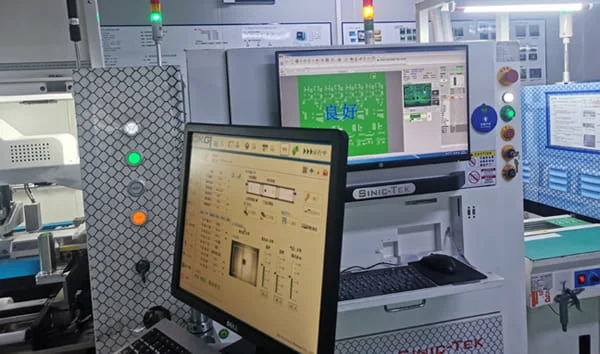
If the solder paste position, surface, shape, and thickness on the PCB pads are qualified, the result is "good", and the PCB goes to the next step. If it is "not good", the engineers pause the whole line and troubleshoot until everything's fine.
4. Pick and place components

Now you come to the component mounting machines. On the machines, some feeders send SMDs, and the robot arms in the machines place them at the expected positions, where the suction nozzle will come over to pick them up and place them onto the PCB. On an automatic SMT line, there are at least two component mounting machines.
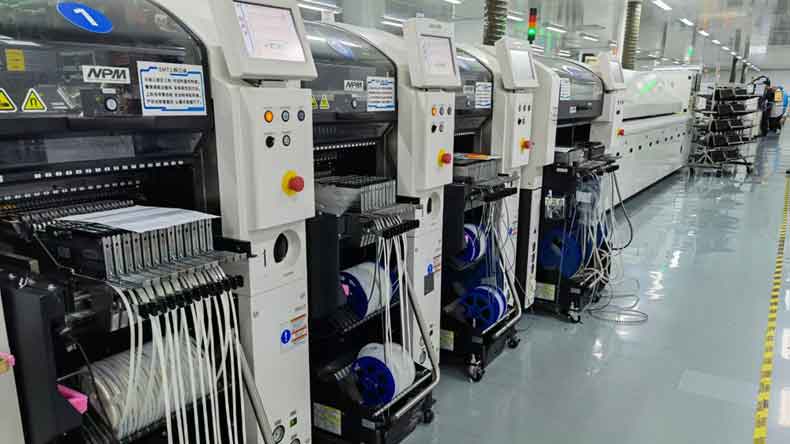
One is the high-speed mounting machine. It places SMDs with smaller footprints, such as resistors, ceramic capacitors, and inductors. The other is the functional mounting machine. It places SMDs with larger footprints, such as electrolytic capacitors, any kind of ICs, and connectors.
(Only for BGA PCB) 5. X-ray inspection
If there is any BGA placed on the PCB, it is necessary to scan the hidden solder balls beneath the BGA with an X-ray. This ensures the solder balls have no breaks, pinholes, or other defects and are qualified for soldering.
6. Reflow soldering
The PCB has solder paste and components, so now solder them? On the automatic SMT line, the PCB is sent into the reflow oven.
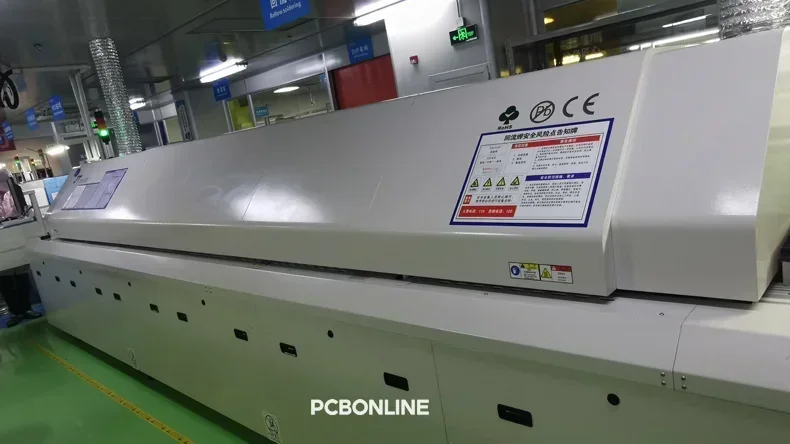
Depending on the different temperature and gas requirements, the reflow ovens have 8 to 12 temperature zones and can be normal or nitrogen reflow ones. The process includes preheating, baking until the solder paste and PCB pads form the intermetallic compound, and cooling down to be the PCBA. Then the PCBA is sent out of the oven and transferred toward the AOI step.
7. AOI (automatic optical inspection)

Here's a note. From your SMT manufacturing provider, the AOI process had better be in-line not independent to ensure PCBA quality. At PCBONLINE, all the SMT lines are equipped with permanently in-line AOI machines that are three-dimensional. (PCBONLINE fabricates and assembles all types of PCBs. Contact PCBONLINE the PCBA manufacturer at info@pcbonline.com.)
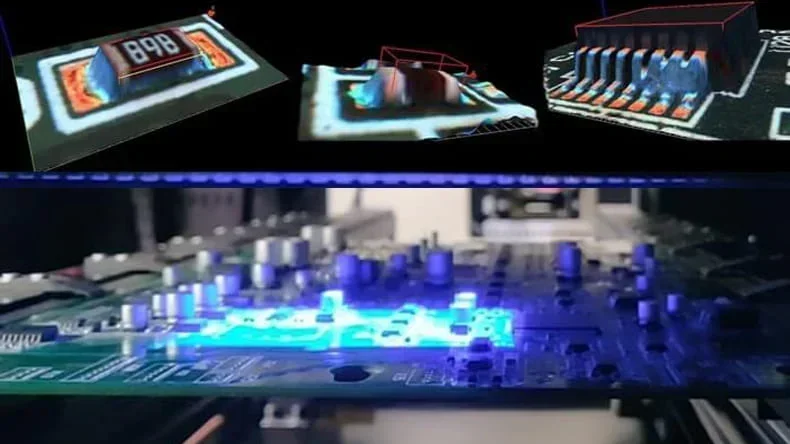
The PCBAs pass the AOI machines' infrared cameras one by one, and all the surface details are scanned and analyzed by the computer. Besides, each AOI process has a specialized technician to visually check the PCBAs and mark the issues if there are any.
At PCBONLINE, the not-good PCBAs have been sent for repair and separated from the good ones ever since then. For SMT manufacturing of a double-sided PCB, the above steps finish its SMD mounting on one side. It will go back to the start of the SMT line for surface mounting on the other side.
Above is the complete SMT manufacturing process. For a PCBA prototyping project, after the PCB assembly, the SMT manufacturer randomly selects a PCBA as a sample for the first article inspection (FAI).
FAI
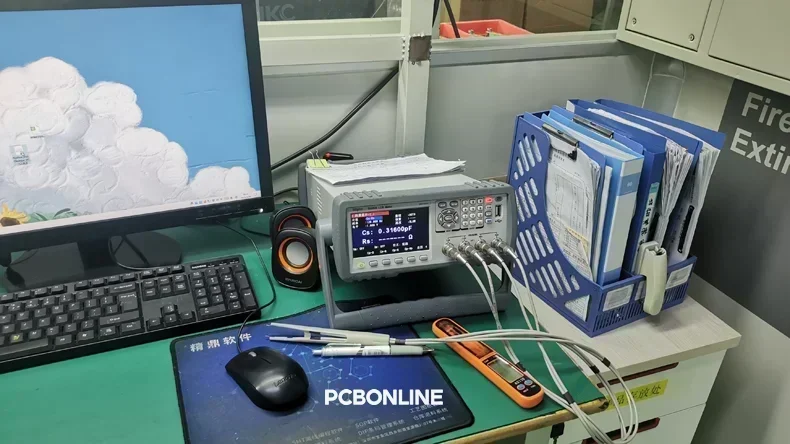
Each time the FAI technician uses the probe heads to touch the solder joints of the PCBA, the value of the component is read aloud and displayed on the screen. If the component value is within the allowed tolerance, the result is good. Otherwise, the result is "non-good", and the PCBA manufacturer needs to troubleshoot the entire prototype project until everything's fine.
Now you've learned the complete SMT manufacturing process and the additional FAI inspection. Is SMT manufacturing the end of PCB assembly?No, if it also needs PTH assembly. We've briefly explained it in the above-mentioned terms, but you can learn more details from " Through Hole PCB Assembly Comprehensive Introduction".
The last question - Are SMT assembly and PTH assembly all of a PCBA manufacturing project?No. At PCBONLINE at the post-assembly, there are value-added services, including IC programming, functional test, conformal coating, thermal aging, and box-build assembly until you receive the modules and ready-to-use electronic products.
Besides, you can save fabrication costs without function or quality sacrifice, as PCBONLINE can choose alternative components with the same function and certifications, if you need, to replace the expensive ones.
What's more, professional engineers with more than 20 years of experience provide one-on-one engineering support and optimize your design to ensure product success.
Conclusion
This blog explains critical terms related to SMT assembly and reveals every detail of the SMT manufacturing process. SMT manufacturing is a standardized process in electronics contract manufacturing, but a lot of details in the process can lead to the success or failure of the project. For successful SMT manufacturing and EMS PCBA, you can work with PCBONLINE the 24-year-old PCBA manufacturer with expertise and control over every detail.
PCBA at PCBONLINE.pdf








